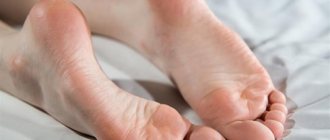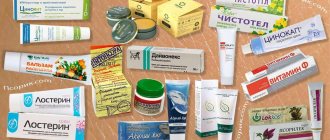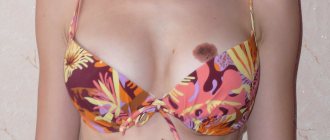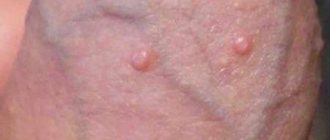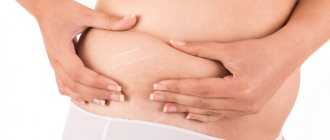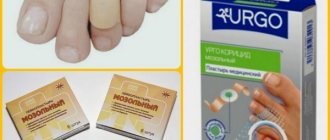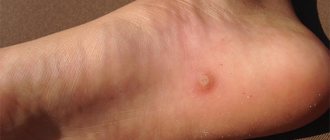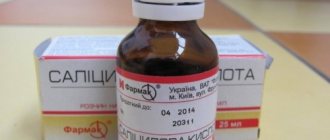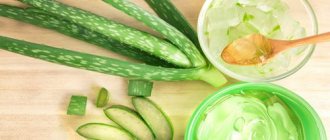A callus is a rough formation on the surface of the skin, formed as a result of compaction of the upper layer of the epidermis. Its growth is facilitated by low-quality or small-sized shoes, thin soles, and chronic impaired blood flow in the legs. Regularly rubbing the affected area can lead to infection, bacterial infection and spread of pain over a large area. An ointment for calluses on the feet will help eliminate the problem and restore the beauty of your feet.
Effect of ointment on the skin
If we talk about the composition of the product, it includes chloramphenicol, which is a broad-spectrum antibiotic, polyethylene oxide, methyluracil, which are responsible for rapid healing and tissue renewal. It is the combination of these ointment components that makes the process so painless and effective. In addition, it is worth noting that this drug envelops the wound and prevents various infections and bacteria from getting there, which only has a positive effect on the result. This composition also ensures that the medicine quickly enters the human body.
Medicine
You can find Levomekol ointment not only in an aluminum tube, but also in a dark glass jar, where the volume is much larger. Most experts note that due to this set of actions, the ointment is considered a medicine with a wide range of actions. When using the drug, resistance to intestinal and Pseudomonas aeruginosa, as well as to a wider range, may be observed. But this only happens if you do not abuse the application. It is the excipients of the ointment that allow it to quickly enter human skin cells without destroying them or compromising their integrity. Even the presence of pus or a large amount of dead skin cannot affect the effect of the ointment. You will find virtually no contraindications to use, except that some may be intolerant to some components of the ointment, which causes an allergic reaction.
Preventing the appearance of dry calluses
Preventive measures include:
- wearing shoes strictly according to the size and volume of the foot,
- compliance with hygiene rules,
- use of special shoes during sports activities,
- the use of silicone pads and insoles to prevent foot rubbing from uncomfortable/new shoes,
- Always use gloves when working with tools.
We recommend reading about laser wart removal. You will learn about the benefits of laser wart removal, contraindications to the procedure, methods of performing it, and results.
And here is more information about wound care after laser wart removal.
Dry calluses may not bother a person for a long time and simply exist on his body. But it is precisely during this “quiet” period that it is worth getting rid of them - all procedures will be as effective and painless as possible.
When is it possible and when not to use Levomekol ointment?
Still, it is worth stipulating the moments in which this medicine can or, on the contrary, cannot be used, so that the result is most effective for your skin.
Often, Levomekol ointment comes into effect in the presence of skin wounds with pus, infection, inflammation or pimples. then the drug will not only relieve redness and general symptoms, but will also completely destroy the dangerous microflora of bacteria and remove swelling. Most often, this ointment is used for: ulcers, acne, purulent-inflammatory processes of the skin, second and third degree burns. It can also serve as a prevention of skin inflammation in the following situations: stitches, open wounds, calluses, cuts and bedsores.
Even if you suffer from some chronic disease, this is not a reason to refuse to use Levomeokol ointment. The only situation in which this is not possible is if you have a personal intolerance to the components, which can cause skin irritation.
Indications and contraindications
"Levomekol" is intended to heal purulent wounds, relieve swelling and cleanse wounds of necrotic contents. Levomekol is used for calluses, 2nd and 3rd degree burns, boils and various purulent skin pathologies. Helps with corns on the feet and is used in the treatment of long-term non-healing skin defects that arise as a result of impaired blood supply. Levomekol is often prescribed for the rapid healing of wounds, cuts, postoperative sutures, inflammation of the superficial layers of the epidermis and other damage to the skin to prevent infection and to accelerate tissue regeneration.
There are no special restrictions for the treatment of calluses with Levomekol, unless there is an allergy to the components.
A highly effective drug for the treatment of calluses and other dermatological problems, it is contraindicated for persons with hypersensitivity or allergies to the constituent components of the drug. Children under the first year of life should not treat skin lesions with Levomekol.
How to use the medicine correctly?
As mentioned earlier, Levomekol is used for calluses or other similar problems only externally, and not internally. To do this, you need to apply the ointment to the affected area, and then cover it with a thick piece of bandage or sterile gauze. The procedure must be repeated several times a day for a week or ten days. In this regard, everything depends on the healing process.
If the wound is large and deep, then you need to make a tampon and soak it in the medicine. And then inject it inside the lesion on the skin. Before this, it is advisable to warm the ointment to 30 degrees Celsius. If it is not possible to make a tampon or the wound hole does not allow this, then you need to seek help from a drainage tube, through which the ointment will gradually flow into the wound. Next, a bandage is applied again. It is important that napkins and bandages are constantly changed as Levomekol ointment removes pus and toxins from the body.
Use of the drug
At the same time, most experts do not recommend the simultaneous use of this drug along with others. Also avoid getting the ointment in your eyes or other mucous membranes; its internal use is strictly prohibited. If such situations arise, then you need to rinse your face with plenty of cold water. And do the same with the stomach.
Terms of use
For the ointment to have a healing effect, it must be used correctly.
- Treatment should begin only after consultation with a doctor, who will select the right drug according to the problem.
- Before anointing the formed callus, your feet need to be steamed. To do this, use a steam bath for 30 minutes. The water should be tolerably hot. Add boiling water throughout the entire period to maintain the temperature. You can add special solutions or herbal infusions to the water.
- After steaming, remove the exfoliated dry epidermis of the growth and lubricate it with ointment.
- To speed up the recovery process for old keratosis, it is recommended to wear a warm sock on the sore leg.
An important condition for the rapid removal of calluses is the regularity of procedures.
Analogues of the product
If it is not possible to purchase this drug, then there are its analogues that contain the same active substances, and therefore will produce the same effect, such as Levomethyl or Netran. You can also note other ointments that are used in the treatment of similar diseases, but have different components:
- Salicylic-zinc ointment for affected skin;
- Levosin for purulent and inflammatory processes on the skin;
- Streptonitol for the treatment of purulent diseases;
Callus structure
As for such a problem as a callus on the skin, it represents a change and deformation of a certain area of the skin due to long-term mechanical influence. Depending on the type of skin and the duration of the problem, various symptoms may appear in the form of detachment of the area or thickening of the stratum corneum. Calluses appear mainly in those areas that are covered with fairly rough skin, that is, on the feet or palms. In other places you can notice a more open effect.
There are several types of calluses that can be found:
- Wet looks like a bubble filled with liquid. They appear due to short-term friction or mechanical damage;
- Hard calluses, or as they are otherwise called, corns, are thickenings under prolonged exposure to friction;
- The core represents the appearance of a nucleus or rod under the skin, which later puts pressure on all muscles and tissues;
This is a common problem that can be easily cured even at home, but with careful and responsible care. If you run them, infection and damage to the entire body may occur. It is difficult to talk about statistical data, because few people go to the hospital with this problem. But often a wet wound on the skin can cause infection and complications.
Why might such problems occur?
Calluses appear due to mechanical stress and friction, and this occurs not only due to unsuitable shoes, but also due to the physiological characteristics of each person. In this case, there are various stages and types of damage to the outer layer of the skin.
The main reasons can be listed as follows:
Uncomfortable shoes cause blisters on feet
- Inappropriate shoes, which, when worn closely and constantly, affect areas of the skin, and then delamination of the epidermis occurs. If there are defects in shoes, we can say that they will cause changes in the heels or the entire foot;
- Excess weight puts even more pressure on the skin on your legs;
- Deformation and changes in the foot occur as a result of wearing the wrong shoes, then we can say that the pressure on the skin of the foot increases and hard calluses appear;
- Diabetes mellitus can be a cause because this disease affects the nutrition of the skin and the vitamins that it receives. If something is missing, the surface will fall into the risk zone. After all, the possibility of infection increases;
- Diseases of peripheral nerves are more rare, but can influence this factor, because in the absence of sensitivity a person simply will not realize that the shoes do not fit him;
Treatment of calluses: ointments and creams
Treatment of calluses involves the use of products with antiseptic and keratolytic effects. If everything is clear with antiseptic properties, then a term such as keratolic needs explanation. This is nothing more than a drug that has the property of softening the upper stratum corneum of the skin by dissolving its keratin. But in order for the affected skin to heal completely, healing ointments are used.
Treatment of wet calluses
Despite the fact that water chafing causes pain and discomfort, people rarely resort to treatment for wet calluses. Considering such damage to be trivial, a person risks getting serious tissue inflammation, because the danger that calluses carry is that dust, dirt, etc. can get into the wound.
As soon as wet abrasion appears, it is necessary to exclude the traumatic factor. These may be uncomfortable shoes. The rubbed area of skin is sealed with an anti-callus plaster. After some time, the callus goes away on its own. If the dropsy bursts, then the first action should be to treat the wound. You can prepare a healing balm, or apply an anti-inflammatory cream to the wound.
The injured area of skin must be treated with hydrogen peroxide or chlorhexidine bigluconate, and a bandage with healing ointment applied. To quickly heal the affected skin, use Levomikol, Vishnevsky ointment, Streptocide ointment.
Doctors do not recommend piercing the callus yourself, because there is a high risk of infection. But a punctured callus heals faster. To make a puncture, you need to take a sterile needle; a needle from a new syringe is perfect. Hands and skin around the dropsy must be treated with an antiseptic. During the puncture, it is important not to touch soft tissue. Afterwards, an ointment is applied to the damaged skin for healing.
If the callus is inflamed and pus is released from it, then you need to consult a doctor. He will clean the wound and prescribe topical antibiotics. Tetracycline ointment is most often used.
Streptocide ointment will prevent the development of infection
Treatment of dry calluses and corns
For dry calluses on the feet, use special ointments and gels. Since these varieties represent a keratinized layer of dead cells, the treatment should be appropriate:
- Feet are steamed in hot water. Chamomile decoction is also used for these purposes.
- You can rub the corn with a pumice stone, but this must be done very carefully so as not to damage the living skin.
- Emollient ointments or creams for calluses and corns, which contain keratolic, are applied to the damaged area of the skin.
Keratolic itself has an extremely strong restorative effect. Ointments and gels containing this component are widely used in surgery and cosmetology. If you spread keratolic on a pimple, it will quickly relieve inflammation and cleanse the skin in a matter of hours.
To treat corns and dry calluses on the toes and heels use:
- Salicylic ointment - the active ingredient is salicylic acid. The stratum corneum is quickly exfoliated, and then normal skin is restored. Treatment with 10% ointment lasts until the therapeutic effect occurs, but no longer than 18–20 days. If there is no improvement, it is recommended to consult a doctor to find another way to deal with calluses. As already mentioned, if you don’t know what to anoint a callus with, take a product that contains a keratolic.
- Ointments and gels with lactic acid will help well against calluses on the hands (Super Antimozolin, Fitofloris, Stop - Mozolin, Nemozol and the like) - the active substance can linger for a long time in dead cells, which guarantees effectiveness even after the first use. The skin around the injury should be lubricated with Vaseline before using the medicine. Lactic acid on healthy skin causes severe irritation and burns. The keratinized area peels off under its influence. It is not recommended to pick or cut off loose areas of skin, as this can cause damage to healthy dermis and bleeding.
- Vishnevsky ointment - active ingredients birch tar, xeroform, castor oil. Ointment for calluses on hands and feet not only softens the skin thanks to the action of the oil, but also disinfects the affected area. The ointment is often used to treat inflamed corns with a core. The softening effect of castor oil helps the remaining components of the ointment for calluses penetrate deep into the stratum corneum of cells. This allows you to fight the growth from the inside.
- Levomikol - active ingredients levomycin, chloramphenicol, methyluracil. Promotes rapid healing of inflamed calluses. But if the abrasion is already inflamed, then you need to know what to apply besides the healing cream. Antimicrobial treatment of the wound is good.
- Bensalitin contains not only salicylic acid, but also benzoic acid. Works great on old corns on the soles. Compresses are made from the ointment. It is recommended to fasten the bandage on the leg for 2–3 hours. Afterwards, the sole is washed with warm water.
- Salidol is an effective remedy for corns with a stem. Since the core of the growth is capable of penetrating very deeply into the layers of the skin, to combat it it is necessary to use ointment with grease. Patches containing this substance are also commercially available. They are very practical to use and are very inexpensive.
- Zinc ointment - this drug is known for being applied to small children under the diaper. It can also be used to smear calluses. The ointment has a thick structure and is not absorbed, which means it must be applied under the bandage. The zinc in the ointment helps speed up the healing of damaged skin and also relieves inflammation in a matter of hours.
- Ichthyol ointment - has an unpleasant odor, but is great for treating calluses on the heels.
If no improvement is observed 10-10 days after starting to use the ointments, then it is better to consult a doctor to treat the growth.
Ichthyol ointment smells unpleasant, but is great for treating corns
Where do calluses most often appear?
For calluses, Levomekol ointment can help at almost any stage, but initially it is worth deciding where they most often appear:
- The sole, because it is this part of the body that is subject to the greatest number of active actions;
- The areas of skin between the toes are exposed to tight shoes or suffer from foot deformities;
- Palms are also susceptible to calluses due to a profession involving heavy mechanical labor when using various tools;
- Knees suffer if you stand on them for a long time;
- Elbows;
- The area of the limb remaining after amputation becomes harder and rougher, as a result of which seals appear;
If the problem occurred precisely in these areas of the skin, it was precisely because it was already roughened and did not allow acute damage to occur.
Another reason can be attributed to the fact that frequent friction or professional activity over a long period of time causes the skin to act and divide cells with greater frequency.
How to choose an ointment for calluses
No matter how effective ointments for corns and calluses are, the main thing you need to pay attention to is comfortable shoes. When buying uncomfortable, narrow shoes, a person risks getting calluses on his feet. But this is not the worst thing. While wearing such shoes, blood flow in the lower extremities is disrupted, which can lead to many serious diseases. During and after treatment, it is important to wear comfortable, normal-sized shoes made from natural fabrics or leather.
The assortment of pharmacies offers a huge selection of what to apply to the callus. You can find both the cheapest ointments and very expensive ones. They have a very similar composition, only the names and prices differ. In order not to overpay for advertising and packaging in vain, it is enough to familiarize yourself with the active ingredients of the drug.
Treatment
Ambulance is required only for wet callous formations, when the risk of infection or bacteria increases. To do this, you need to eliminate the mechanical impact factor, disinfect the area, pierce it and bandage it.
As for the mechanical impact, you can get rid of it by changing shoes, changing a sock, or applying a plaster or bandage. In this case, there is no need to apply ice to the skin at all, because this will not relieve the pain, but can damage the already exfoliated skin.
Callus puncture
For piercing and disinfection, you will need some antiseptics and a special, clean medical needle. Carry out the procedure no later than one day after the problem appears. It is better to insert the needle from the side, and then bandage the wound. If the bubble bursts ahead of time, then it needs to be cared for like an open wound.
It is after all this that the ointment that was discussed initially comes into force. Levomekol ointment has a positive effect on calluses. Therefore, after the puncture, you need to apply it to the wound several times a day for 10 days. At the same time, do not forget to cover it with a plaster or wrap it with a bandage to enhance the effect of Levomekol ointment.
What to do to avoid complications?
If you do not adhere to the basic rules of treatment, complications may arise, because bacteria that enter the body through the wound can then follow into the fatty tissue, and then into the general bloodstream. Thus, the spread of infection and pathogenic microorganisms throughout the human body begins. To prevent this from happening, you must:
- Pierce the wound only with a disinfected needle;
- Maintain coating density;
- Protect skin from friction or damage;
- Carry out frequent dressing changes only with sterile elements;
- Do not allow moisture or sweat to get under the bandage;
Prevention of the problem
In addition, there are ways to help avoid the appearance of corns or open wounds of this type on the skin altogether. And these are:
- Wearing shoes in your size. Therefore, you should not choose too tight or narrow shoes that put pressure on your toes and rub. Rough material of the product or high heels can also have a negative effect;
- Wearing socks that reduce shoe contact area and friction. For high physical activity, thick socks that absorb moisture well and are made of polyester with wool are ideal;
- Use an antiperspirant on your feet to reduce moisture and reduce mechanical stress;
- Constant foot hygiene;
- The required amount of rest, which must be combined with the fact that you will still take off your socks to air your feet;
- Using gel pads, gloves and knee pads that will protect skin areas from friction;
A miracle remedy for combating calluses on the skin
If you take this problem seriously and carry out the necessary prevention, then you may not encounter the appearance of calluses on the skin at all. And you will not need the help of Levomekol medication and sterile dressings. Remember that your feet are subject to the greatest stress, so they need to be protected and taken care of.
Is it permissible to be treated with iodine and brilliant green?
Iodine is included in selected folk remedies for the treatment of callus. If you find puffy calluses on your fingers or heels, simply spread iodine on the callus overnight. By morning the person will stop feeling pain and the callus will go away.
It is permissible to use iodine or brilliant green if you want to pierce a water callus. The puncture is performed in emergency cases! The products are used to disinfect needles and callus puncture sites. In other cases, using green paint is not recommended. If the wet callus has ruptured, the product should not be used, avoiding the chance of further increasing skin irritation.
